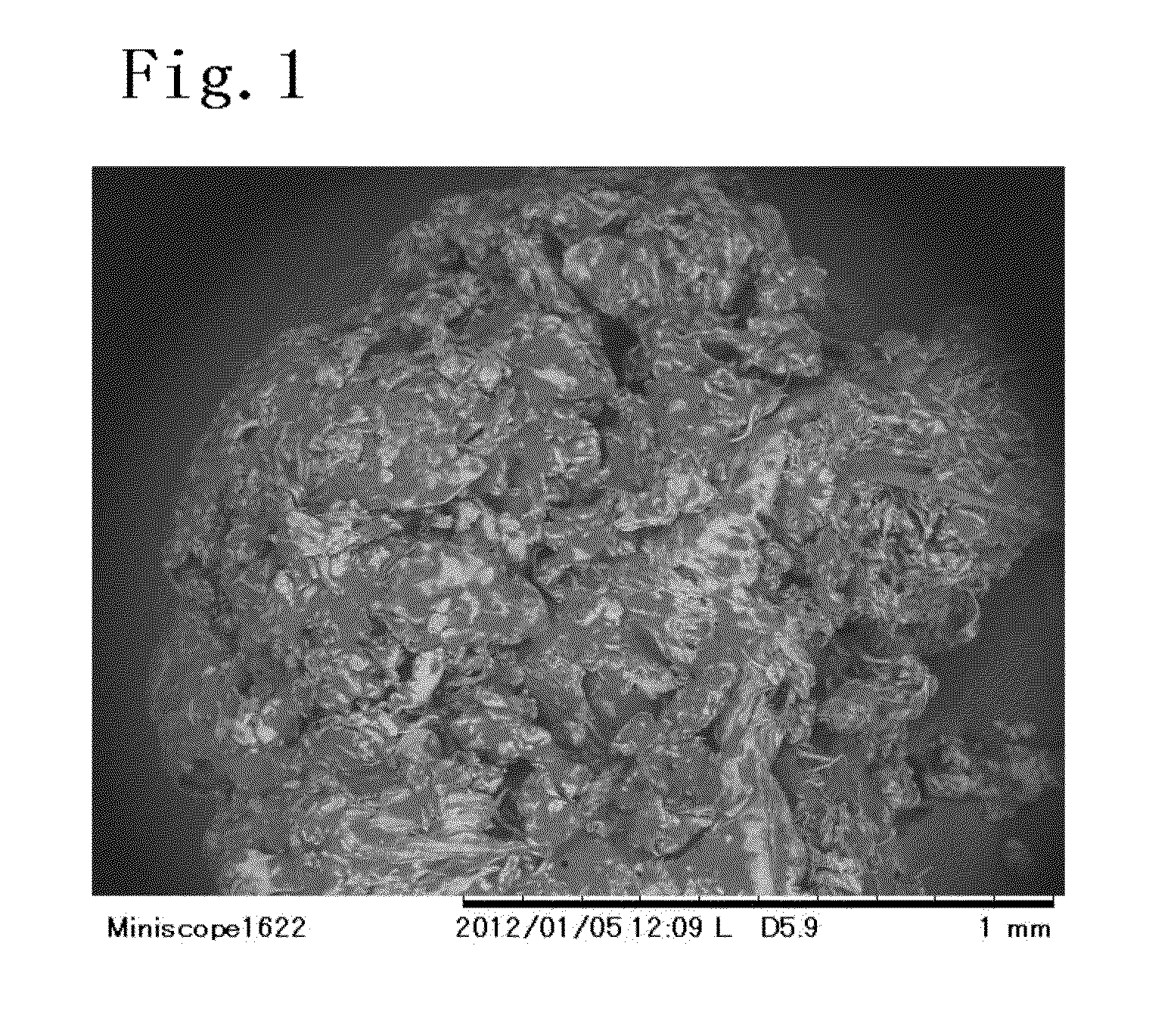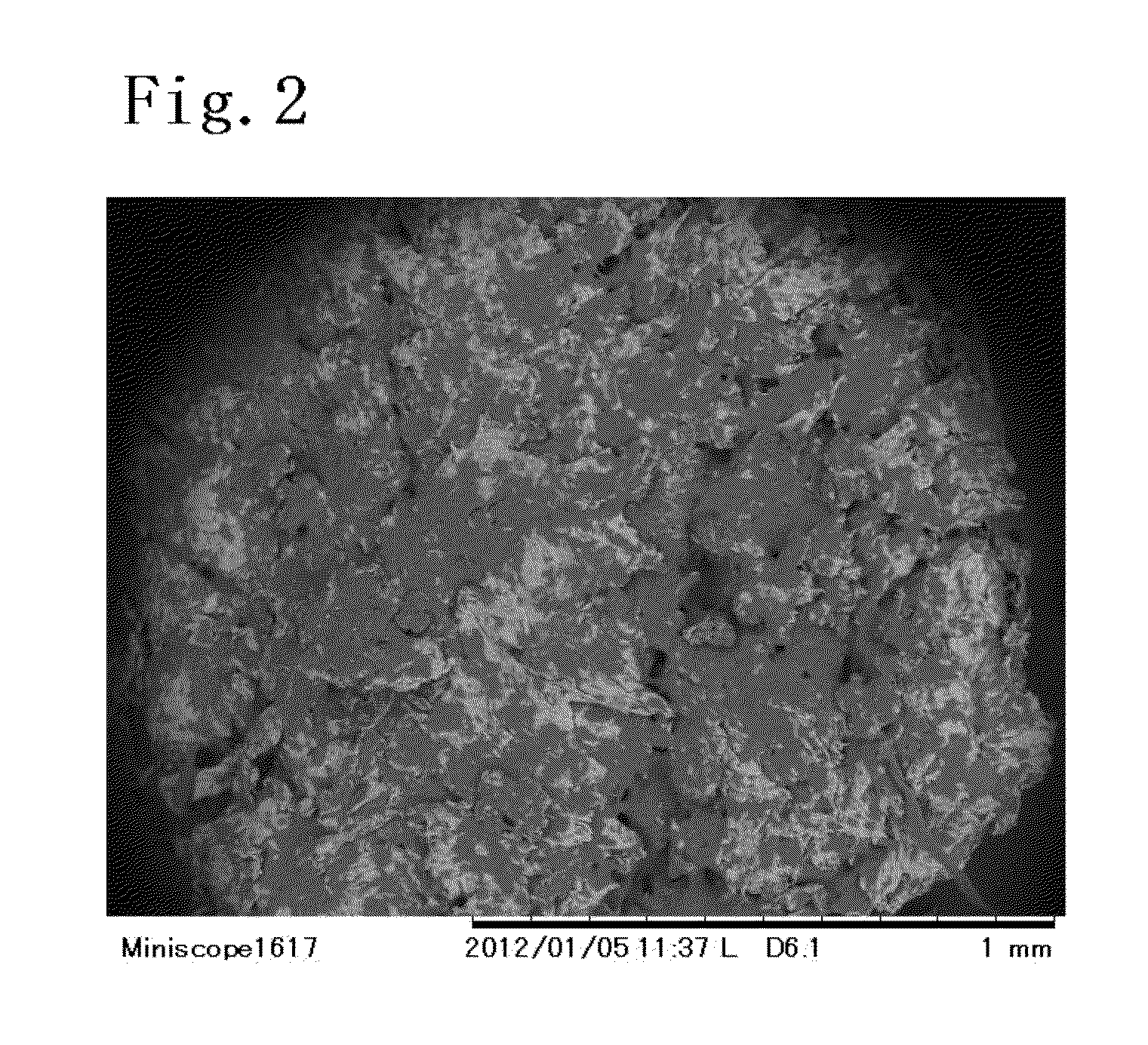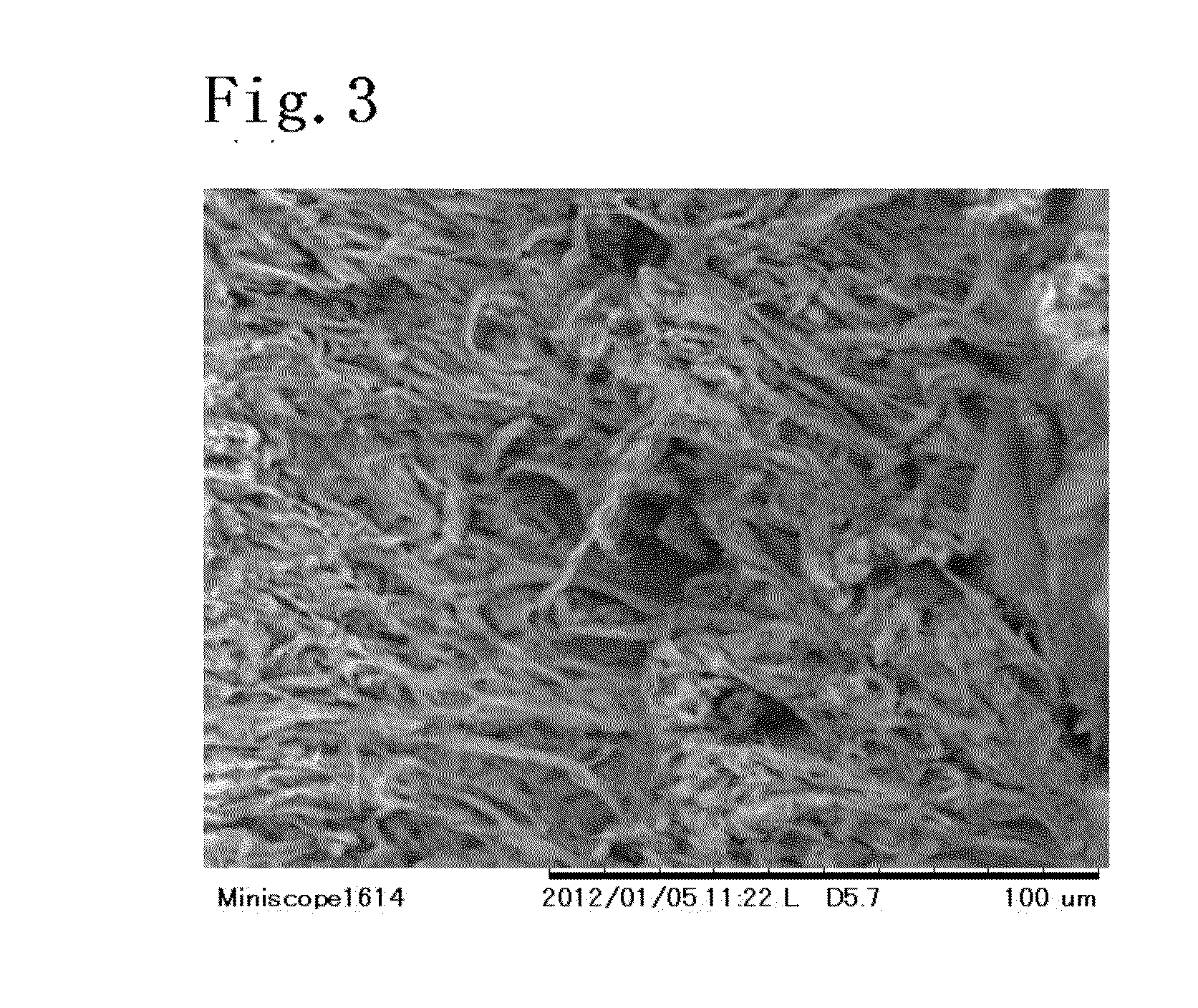Polymer adsorbent
a technology of polymer adsorption and polymer, which is applied in the direction of ion-exchangers, water/sludge/sewage treatment, chemical instruments and processes, etc., can solve the problems of difficult adaptation to some conditions of use or installation environment, limited use, and the inability to ensure the availability of rare metal resources, etc., to achieve the effect of easy production of rare metals, improved durability, and long-term maintenan
- Summary
- Abstract
- Description
- Claims
- Application Information
AI Technical Summary
Benefits of technology
Problems solved by technology
Method used
Image
Examples
example 1
[0066]10 g of polyvinyl chloride (manufactured by Wako Pure Chemical Industries, polymerization degree: about 1,100), 6 g of a glycidyl-group-containing polymer (manufactured by NOF Corporation, MARPROOF, styrene-based, molecular weight: about 20,000, epoxy value: 310 g / eq), and 4 g of a pore-forming agent were dissolved in 100 mL of tetrahydrofuran (THF) to give a uniform polymer solution. As the pore-forming agent, polyvinyl acetate (manufactured by Wako Pure Chemical Industries, polymerization degree: about 1,500) and polyoxyethylene octylphenyl ether (Triton X-100, manufactured by Wako Pure Chemical Industries, polyoxyethylene polymerization degree: about 10) were used. THF was slowly removed from the mixed solution under reduced pressure with stirring to give a viscous liquid and then transferred to a glass container to give a 2-mm-thick polymer mass. The polymer mass was coarsely crushed and then ground using a ball mill. The obtained crushed particles were classified through ...
example 2
[0067]70 g of polyvinyl chloride (manufactured by Wako Pure Chemical Industries, polymerization degree: about 1,100) and 30 g of a glycidyl-group-containing polymer (manufactured by NOF Corporation, MARPROOF, molecular weight: acrylic, about 12,000, epoxy value: 170 g / eq) were dissolved in 250 mL of tetrahydrofuran (THF) to give a uniform polymer solution. The solution was applied onto a glass plate, and THF was naturally removed slowly overnight to give a 0.3-mm-thick film. The film was cut to a 30 mm×30 mm square and then immersed in a 30% aqueous isopropyl alcohol solution containing 10% a polyamine to carry out a reaction at 40° C. for 4 hours, thereby introducing the polyamine. As the polyamine, ethylenediamine, pentaethylenehexamine, and polyethyleneimine (molecular weight: 600) were used. The polyamine reaction was followed by washing with pure water, thereby giving a film-like polymer adsorbent having a polyamine introduced thereinto. The three kinds of film-like polymer ads...
PUM
| Property | Measurement | Unit |
|---|---|---|
| porosity | aaaaa | aaaaa |
| pore size | aaaaa | aaaaa |
| pressure | aaaaa | aaaaa |
Abstract
Description
Claims
Application Information
 Login to View More
Login to View More - R&D
- Intellectual Property
- Life Sciences
- Materials
- Tech Scout
- Unparalleled Data Quality
- Higher Quality Content
- 60% Fewer Hallucinations
Browse by: Latest US Patents, China's latest patents, Technical Efficacy Thesaurus, Application Domain, Technology Topic, Popular Technical Reports.
© 2025 PatSnap. All rights reserved.Legal|Privacy policy|Modern Slavery Act Transparency Statement|Sitemap|About US| Contact US: help@patsnap.com



